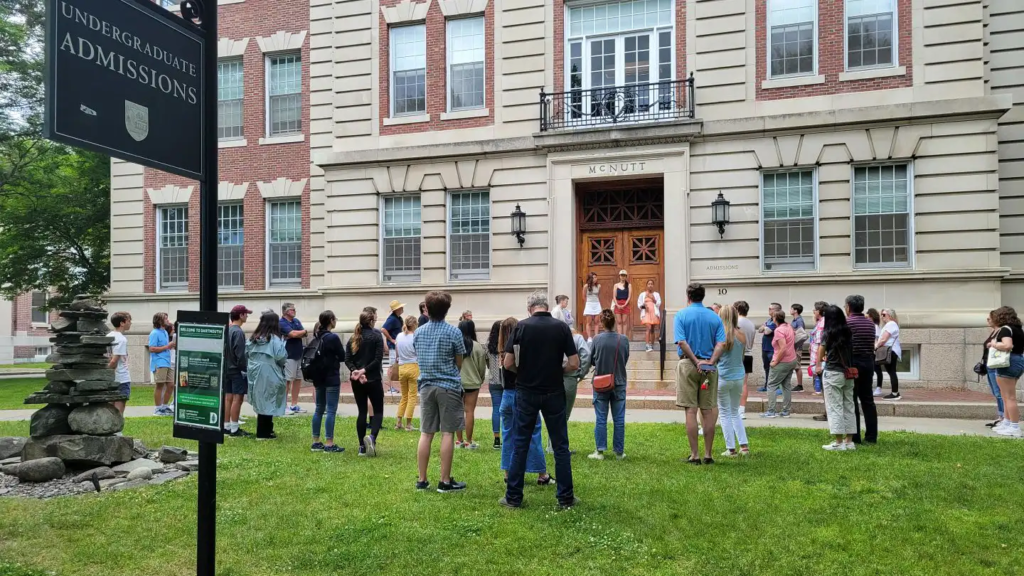
In recent weeks, Dartmouth students’ inboxes have been flooded by waves of colorful, GIF-laden emails that garishly advertise—and somehow manage to shriek through textual form—“Dimensions!” For those students who have understandably declined to pay much attention to these messages, here is the gist: This year, the College elected to host two formal in-person admitted-student programs, known as “Dimensions.” These programs were held on April 17 and 24; however, throughout the month of April, admitted students have been allowed to plan their own visit any weekday, Monday through Thursday (this, I gather, is the so-called “3rd Dimension”). They have until May 1 to accept or decline their offer of admission to the College.
In light of this pressing deadline and these visits from high-school seniors, which even disinterested Dartmouth students must have noticed of late, we ask: Who is visiting us, and which of them will return here permanently in the fall? To be sure, the question of who matriculates does not concern merely the admitted students themselves; it also concerns existing students and alumni, who want to see Dartmouth gain a well-situated Class.
If one subscribes to the swirling storytelling that regularly graces the pages of “3D Magazine,” as admittees (or at least their parents) likely have done, one would believe that each and every Dartmouth student evinces a quirky individualism. While I hardly dispute that Dartmouth students tend to have an impressive array of interests and talents, I do firmly believe that those students who come to truly enjoy and embrace their Dartmouth years embody a number of similar attributes. Hence, I hope the “Dimensions” program serves to familiarize prospective matriculants as to the traits of such a student:
First, this student will typically appreciate the outdoors and, more especially, the aura and aesthetics of New England, which Dartmouth exudes in spades. Dartmouth is often heralded as sporting one of the prettier campuses architecturally and scenically, and the best-fit student will tend to agree. He or she will also likely be struck by the allure of, variously, the Connecticut River, the Skiway, the prospect of “Trips,” and of course the very fact that the Appalachian Trail runs right through downtown Hanover. The student need not be an athlete (although many are) but merely have a desire to embrace bucolic New England.
It is important that attendees of “Dimensions” come to discover that Dartmouth has a longstanding dual impulse in self-identification which is keenly felt, and appreciated, by the devoted Dartmouth student in the course of his or her daily life. On the one hand, Dartmouth has the size, feel, and aura of a northeastern liberal-arts college. On the other hand, it is in fact a “university,” in that it enables and produces substantial research and offers heavily financed undergraduate STEM programs. Dartmouth’s graduate students also lend their stimulating presence to campus dynamics. The ideal undergraduate matriculant to the College will, I think, ultimately be attracted to the very fact that these two impulses coexist far more than to one over the other.
Dartmouth students tend, from the outset, to be more well-rounded than their peers at schools of similar stature. The archetypal Dartmouth undergraduate, certainly, will not confine him or herself to a singular pursuit. Rather, this student will be enthusiastic about setting out to make something of his or her Dartmouth experience; to ensure his or her tenure in Hanover is time well spent; to avail him or herself of numerous avenues, opportunities, and experiences that the College and its environs present to students.
Dartmouth’s admissions office routinely tells admittees that each of them is distinctive and differs from the rest of the lot in substantial ways. While I hardly question the existence and importance of individuality in the admissions process and indeed its integrality in undergraduate life, I do contend that the student who will best exemplify the spirit of the College will ultimately have much in common with his or her Dartmouth peers.

Be the first to comment on "Editorial: Who’s Coming to Campus?"